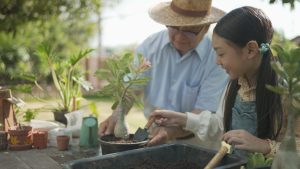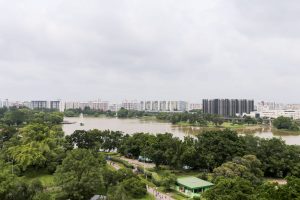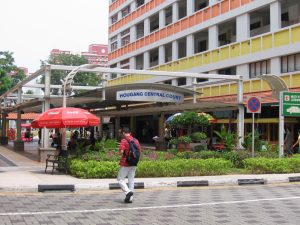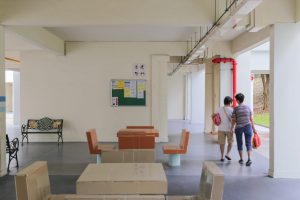Deepening our Understanding of Seniors’ Social Networks in Singapore
November 16, 2021

Senior citizens with strong social networks of family, friends, and neighbours have been found to have better health. However, seniors’ social networks need not be limited to their local neighbourhoods. In our globalized world, it is not unlikely for many of seniors’ social ties, particularly with friends, to reach beyond their immediate surroundings. The project is based on the idea that seniors aren’t just ageing in neighbourhoods or “ageing-in-place”, but ageing-in-social-networks, comprising middle and long chains of social support.
Led by Associate Professor Elaine Lynn-Ee Ho (NUS Geography), the three and a half year project ‘Ageing and Social Networks: Mapping the Life-worlds of Older Singaporeans’, kicked off in January 2021. It is funded by the Social Science Research Thematic Grant (SSRTG) (Type B $>1 million), and examines the social and geographical characteristics of older people’s social networks, uncovering which members of older people’s social networks are most sought after for assistance, why these specific individuals are called upon, what types of care older people request through their social networks, and how they access them.

The research combines social network analysis with qualitative research and Geographic Information Science (GIS), blending large scale numerical survey data with deep, targeted qualitative research that is then mapped onto real spaces. These spaces are two Singapore neighbourhoods, Jurong and Hougang. The team found that, after comparing the demographic profiles of a few places in Singapore, Jurong and Hougang had similar resident compositions but with differences in social infrastructure for seniors that warrant deeper study.
The researchers will look at how older people’s networks of social care are shaped by their surroundings. They will also contrast older people’s care-seeking strategies and resources in each site. Overall, the project aims to advance theories on aging and social networks, as well as qualitative GIS methods, while simultaneously integrating them into survey research.

In the first stage of the project, 1,200 seniors aged 65 and above from Jurong and Hougang will be surveyed. The survey was designed by Co-Investigator Associate Professor Vincent Chua (NUS Sociology), an expert on social network analysis, with inputs from Associate Professor Feng Chen-Chieh (NUS Geography) and A/P Ho. A/P Chua uses name generators to study the respondents’ social networks. A/P Ho provided insights from her previous projects on ageing that would help tailor the survey questions to the profile of elderly respondents, for example, the types of senior facilities that they might use. A/P Feng, a GIS expert, provided insights on distance considerations and connectivity. The team plans to recruit a sample of the survey participants for qualitative GIS fieldwork.
In the second stage the researchers will interview 50 seniors from the survey group three times and use GPS to track their mobility patterns for a week to determine their daily activities, looking at when and where they interact with people in their social networks. In the third and final stage, the data from the previous stages will be analysed and used to generate GIS visualization, portraying the spatial patterns of the respondents’ social networks. The data will also be examined to reveal the reasons, feelings, and attitudes that seniors have toward their regular routines and social networks.

In an update on the project, A/P Ho described the challenges that the research team has been tackling due to the continuance of the COVID-19 pandemic. She explained that conducting pilot interviews that require translation is difficult at present, since if an interview takes place in a public area such as a void deck of a participant’s housing block, then only the participant and the main interviewer (not the translator) can be there.
Consequently, if a participant who needs a translator present is willing, the researchers will interview them at home. In addition, the researchers have made preparations to do Antigen Rapid Tests before meeting the participants and are mindful of the necessary hygiene practices to be observed. The research team is also currently considering carrying out hybrid fieldwork methods like using WhatsApp or Zoom so that more interviewers can join or review the fieldwork remotely.

